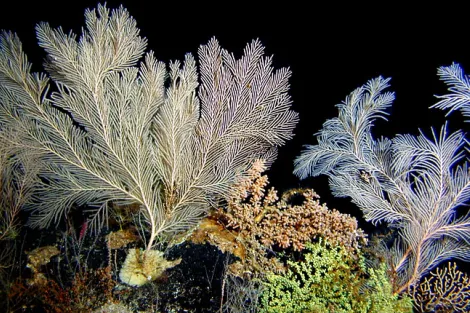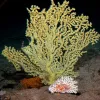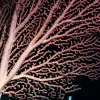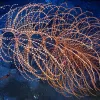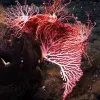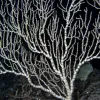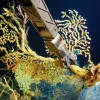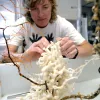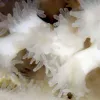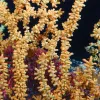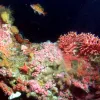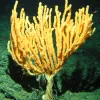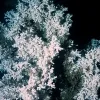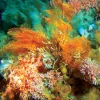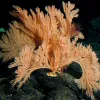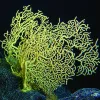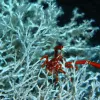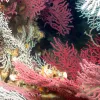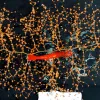Dr. Amy Baco-Taylor observed corals like these on her first submarine dive to a deep-sea coral bed off the coast of Hawaii. They include primnoids, zoanthids, and Gerardia. The high density and diversity of species is typical of most deep-coral beds in Hawaii at this depth. Learn how she became interested in deep-sea corals, and explore more in the multimedia feature "Coral Gardens of the Deep Sea."
Diversity of Deep-Sea Corals
Sample the surprising diversity of deep-sea corals. See some of the ways they differ in color, shape, and size. Explore more in the multimedia feature "Coral Gardens of the Deep Sea."
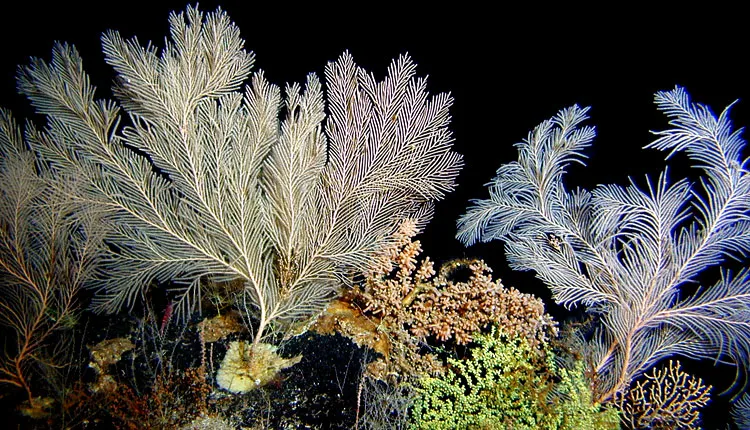
Deep-Sea Coral Community
Credit: Photos by A. Baco, T. Kerby and M. Kremer, Hawaii Undersea Research Laboratory and NOAA Ocean Exploration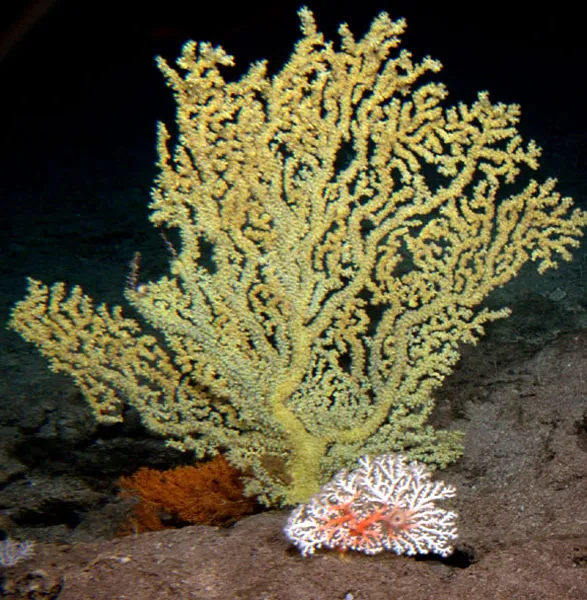
Gold Coral
Credit: NOAASpecies of deep-sea gold coral, or Gerardia, often have a tree-like shape, as you can see in this specimen. See more pictures of coral in our Deep-sea Corals article.
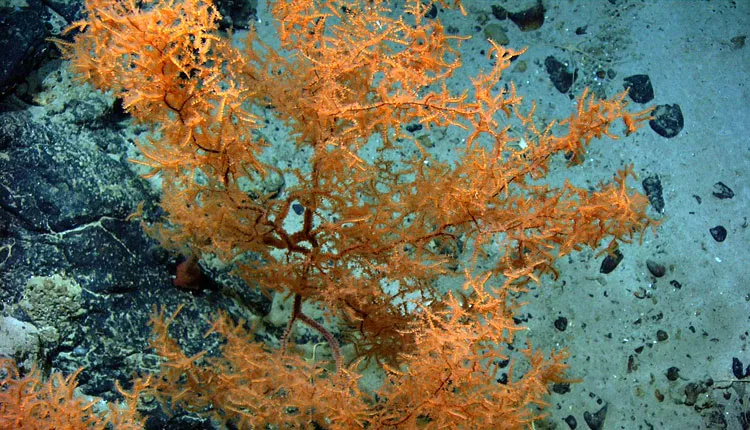
Black Corals
Credit: Mountains in the Sea Research Team; the IFE Crew; and NOAABlack corals, like this one growing on the Manning Seamount off the New England coast, often resemble bushes or trees. Contrary to its name, the living tissue of black coral can be one of several colors. It’s the skeleton that is black. See more pictures of coral in our Deep-sea Corals article.
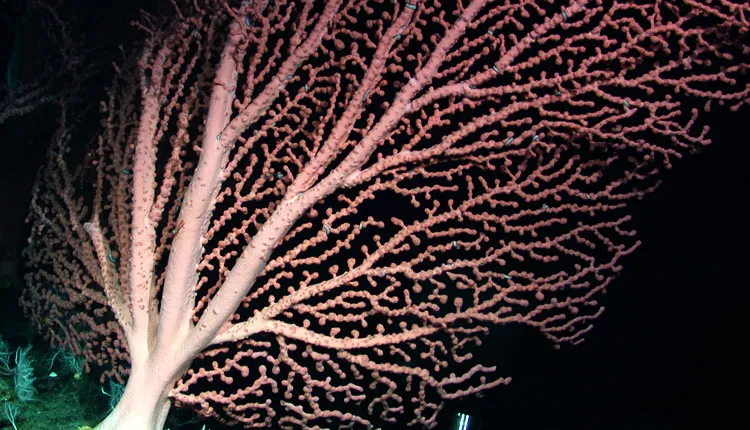
Bubblegum Coral
Credit: NOAA/MBARI 2006This bubblegum coral (Paragorgia arborea) has a fanlike shape. It is growing 1,310 m (4,298 ft) deep on the Davidson Seamount southwest of Monterey, California. Learn more about deep-sea corals in the multimedia feature "Coral Gardens of the Deep Sea."
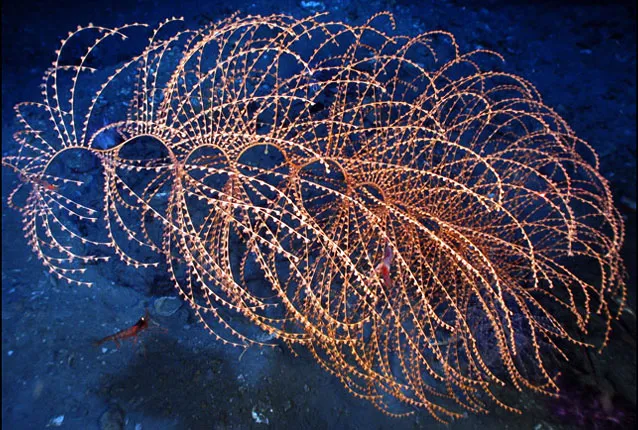
Sea Whip Coral
Credit: Aquapix and Expedition to the Deep Slope 2007The pink strands of this single deep-sea coral harbor a variety of marine life. Sea whips are gorgonian corals and have flexible skeletons. See more pictures of coral in our Deep-sea Corals article.
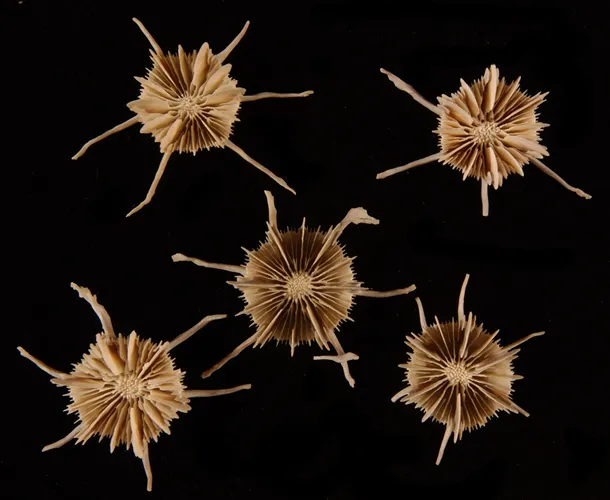
Solitary Deep-water Corals
Credit: Smithsonian InstitutionThese corals from the Smithsonian collections are Stephanocyathus (A.) spiniger, a solitary, deep-water stony coral species. Around 74% of all deep-water corals are solitary, living as individual organisms instead of forming large colonies like most shallow-water corals. This one has six long spines that slow it from sinking into soft substrates.

Red Tree Coral
Credit: NOAA/MBARI 2006Tree corals like this Calyptrophora bayer can grow several meters high and resemble brightly colored trees. This deep-sea coral was found 1,683 m (5,522 ft) deep on the Davidson Seamount. See more pictures of coral in our Deep-sea Corals article.
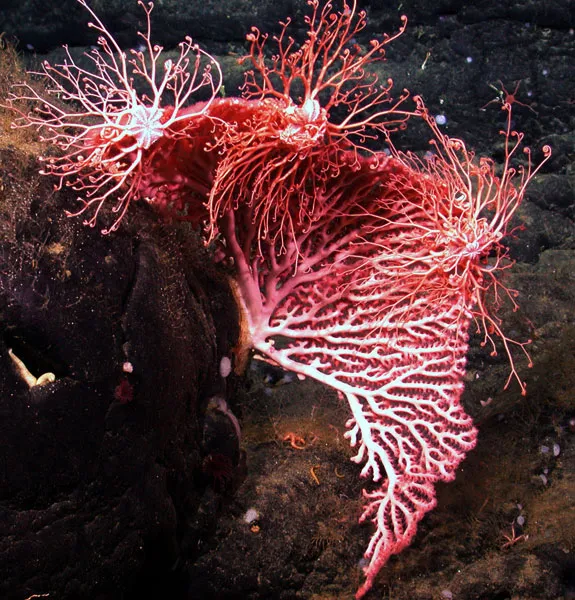
Red Coral
Credit: NOAA/MBARIA fan-shaped colony of red coral (Corallium sp.) on the Davidson Seamount provides a perch for three basket stars as they feed. See more pictures of coral in our Deep-sea Corals article.

Bamboo Coral
Credit: NOAA/MBARI 2002This 200-year-old bamboo coral colony is growing on the Davidson Seamount off the coast of California. The skeleton of this deep-sea coral has bamboo-like segments. See more pictures of coral in our Deep-sea Corals article.
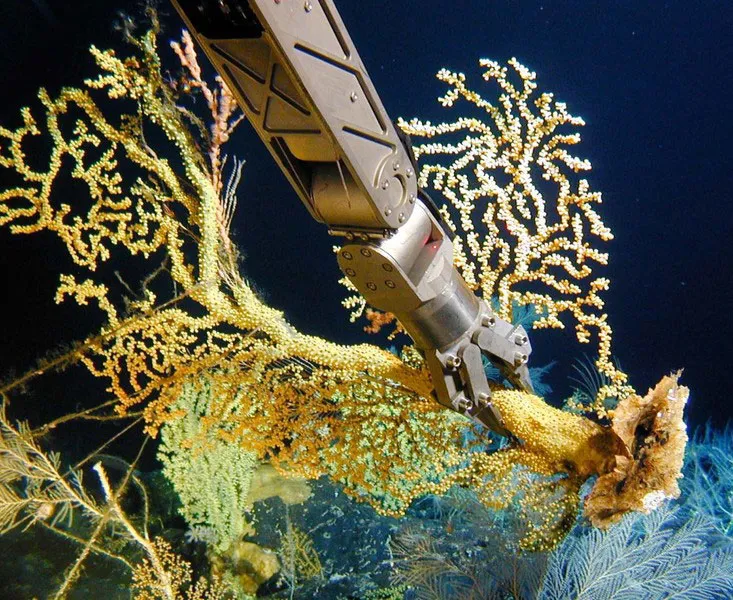
Collecting Gold Coral from the Deep Sea
Credit: NOAA-HURL ArchivesThe robotic arm of a Pisces submersible collects a gold coral colony (Gerardia sp.) during a research cruise in the Hawaiian Islands. Ocean scientists have radiocarbon-dated some Gerardia specimens from this area at more than 2,700 years old. Explore more the multimedia feature "Coral Gardens of the Deep Sea."
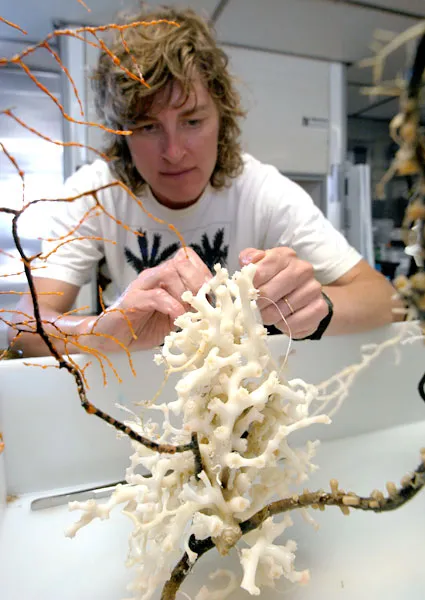
Deep-Sea Coral Sample
Credit: A. HowardIn the wet lab aboard the R/V Seward Johnson, Dr. Martha Nizinski examines a sample of the deep-sea coral Lophelia pertusa, collected 600-m (1,969-ft) deep off the coast of the southeastern United States. She is looking for other organisms that may be living in association with this coral. Explore more in the multimedia feature "Coral Gardens of the Deep Sea."
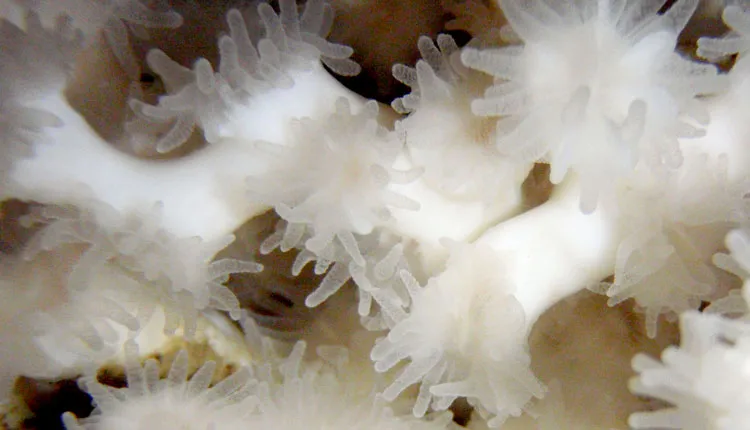
Lophelia Pertusa Coral Polyps
Credit: J. Murray RobertsDeep-sea corals scientist Dr. J. Murray Roberts photographed these living polyps from the Mingulay Reef Complex off Scotland in aquaria in 2010. Learn more about Roberts' work mapping deep-sea corals and explore more about deep-sea corals in the Ocean Portal multimedia feature "Coral Gardens of the Deep Sea."
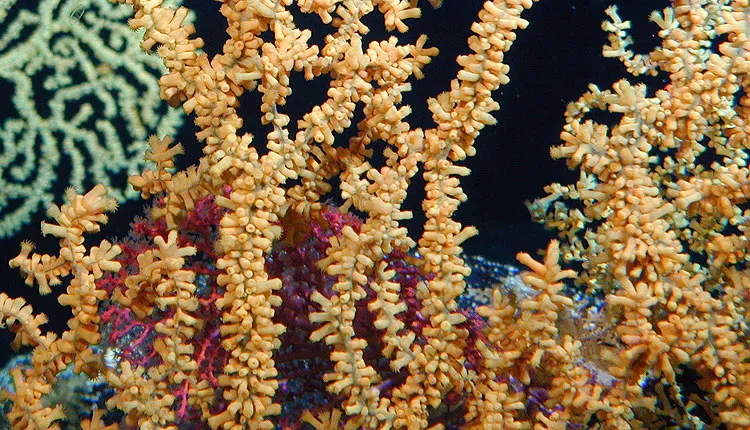
Gold Coral Close-up
Credit: Hawaii Undersea Research Laboratory, National Oceanographic Atmospheric Administration (NOAA) and Rob DunbarThis close-up photograph of gold coral (Gerardia sp.) was taken at the Cross Seamount in the Pacific Ocean at a depth of 400 m (1,312 ft). Gold corals at this location can have lifespans of 2,000 years or more. Explore more in the multimedia feature "Coral Gardens of the Deep Sea."
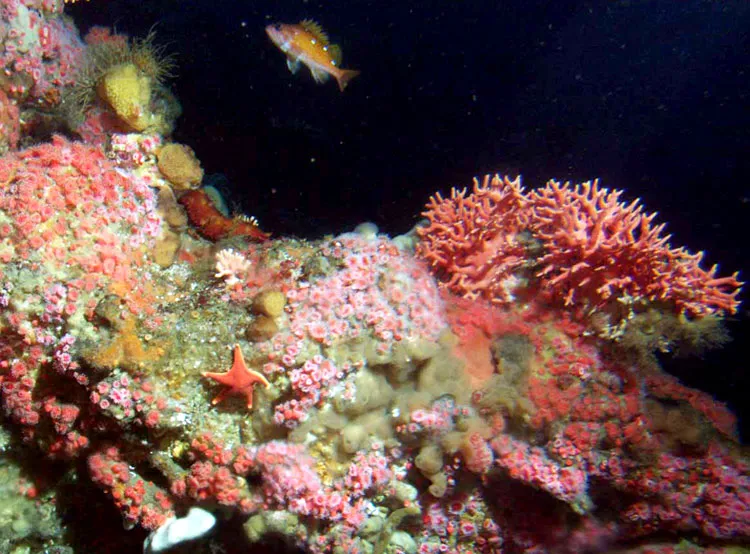
Deep-Sea Coral Habitat
Credit: Jodi Pirtle/Cordell Bank National Marine SanctuaryRockfish, anemones, and other invertebrates inhabit this deep-sea coral reef in Cordell Bank National Marine Sanctuary off the coast of California. Deep-sea corals provide habitat and benefits to a variety of marine life. Explore more in the multimedia feature "Coral Gardens of the Deep Sea."
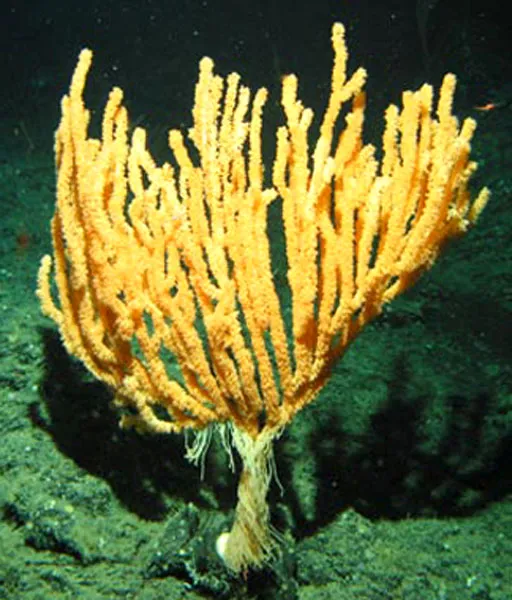
New Bamboo Coral
Credit: NOAA, WHOI, the Alvin Group, and the 2004 GOA ExpeditionSee a few of the many species of deep-sea corals that have been discovered by scientists just since 2004. Learn about more deep-sea discoveries in our Deep-sea Corals article.
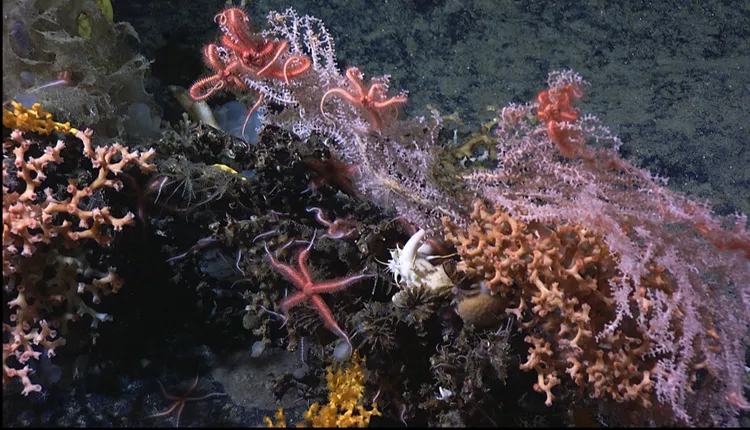
Manning Seamount Deep Coral Communities
Credit: Mountains in the Sea Research Group/NOAA/IFEColorful corals and brittlestars inhabit the Manning Seamount in the Atlantic Ocean, off the coast of New England. Here you can see golden-colored coral (Enallopsamia rostrata), pinkish-brown coral (Solenosmilia variabilis), pink soft coral (Candidella imbricate), and brittlestars (Ophiacantha sp.). Read more in our story about deep sea exploration.

Lophelia pertusa Colony
Credit: J.M. RobertsThis colony of Lophelia pertusa was photographed from the Mingulay Reef Complex off Scotland in 2005. Learn more about the deep-sea coral reefs in our Deep-sea Corals article.
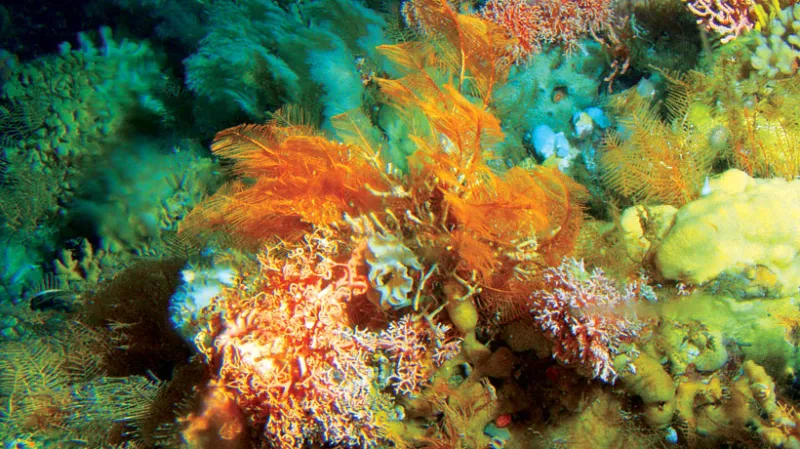
Aleutian Coral Reef
Credit: Alberto Lindner/NOAASeveral species of deep-sea corals form a garden 165 m (540 ft) below the ocean’s surface off the coast of Alaska’s Aleutian Islands. Explore more in the multimedia feature "Coral Gardens of the Deep Sea."
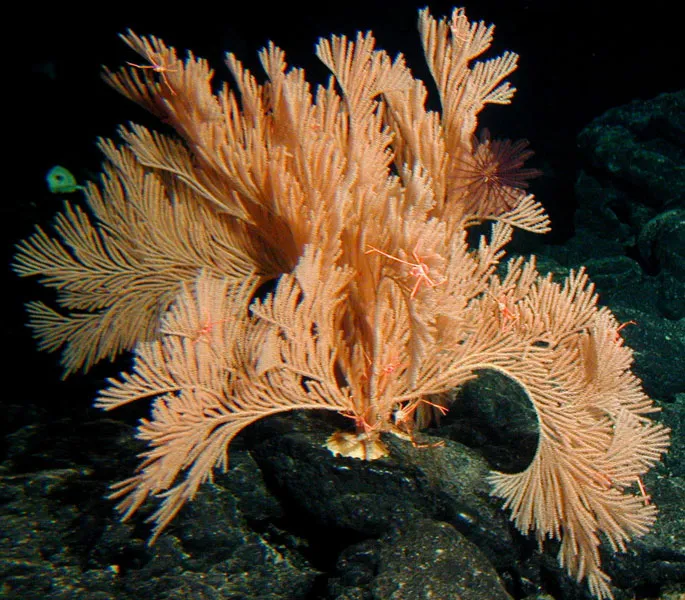
Primnoid Coral
Credit: Photos by A. Baco, T.Kerby and M. Kremer, Hawaii Undersea Research Laboratory and NOAA Ocean ExplorationThe branches of a primnoid coral in the genus Calyptrophora provide a habitat for galathaoid crabs. Learn more about the deep-sea coral reefs in our Deep-sea Corals article.
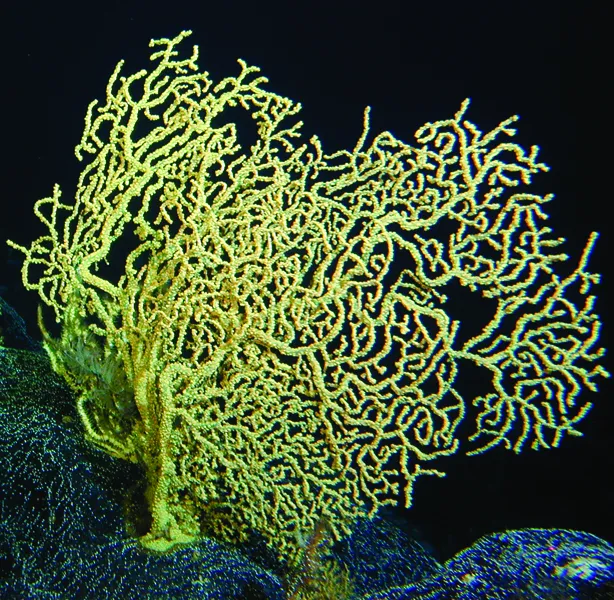
How old is black coral?
Credit: Texas A&M UniversityThis deep-sea black coral from Hawaii (Leiopathes sp.) is more than 4,200 years old. Black corals are named for the color of their skeletons, but the external tissues of black corals come in many bright colors. Explore more in the multimedia feature "Coral Gardens of the Deep Sea."
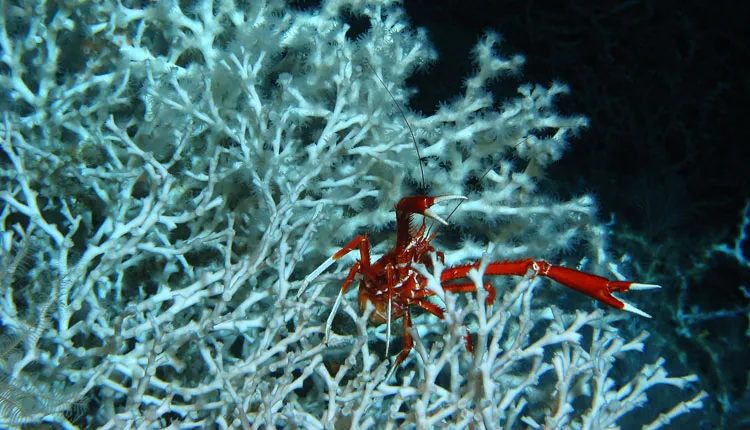
Coral Thicket with Lobster
Credit: S. Ross et al., UNCW, NOAA/USGS DISCOVRE CruiseA thicket of white stony coral (Lophelia pertusa) shelters a squat lobster (Eumunida picta). This is the typical shape of this widespread species of deep-sea coral. See more pictures of coral in our Deep-sea Corals article.
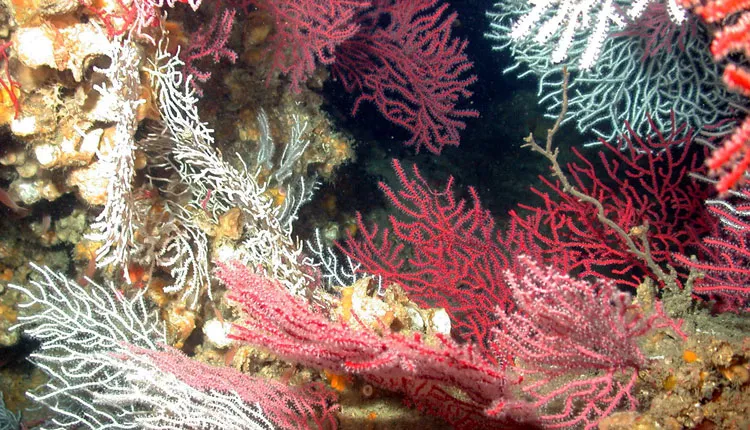
Protected Deep-sea Corals
Credit: NURC/UNCWThese deep-sea corals at the Madison-Swanson Marine Reserve in the Gulf of Mexico are protected, along with the marine life they harbor. Learn more about deep-sea corals and marine protected areas in our Deep-sea Corals article.
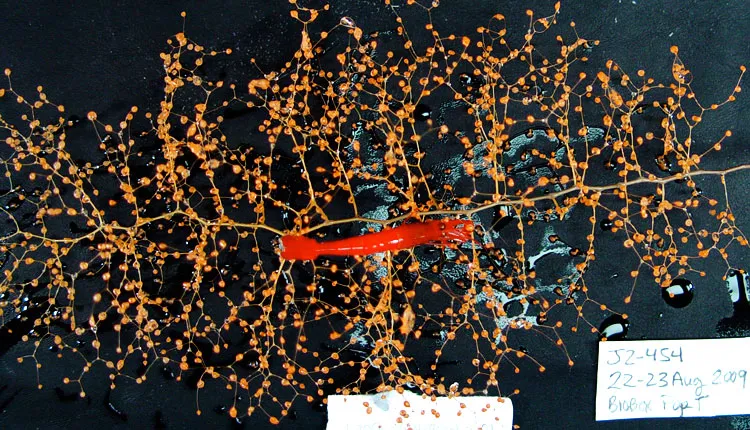
Deep-sea Coral and Shrimp
Credit: Lophelia II 2009: Deepwater Coral Expedition – Reefs, Rigs and WrecksMarine scientists photographed and measured this gorgonian coral (Chrysogorgia sp.) and deep-sea shrimp (Bathypalaemonella sp.) just as they were collected—together. Find out how ocean scientists study deep-sea corals in our Deep-sea Corals article.


